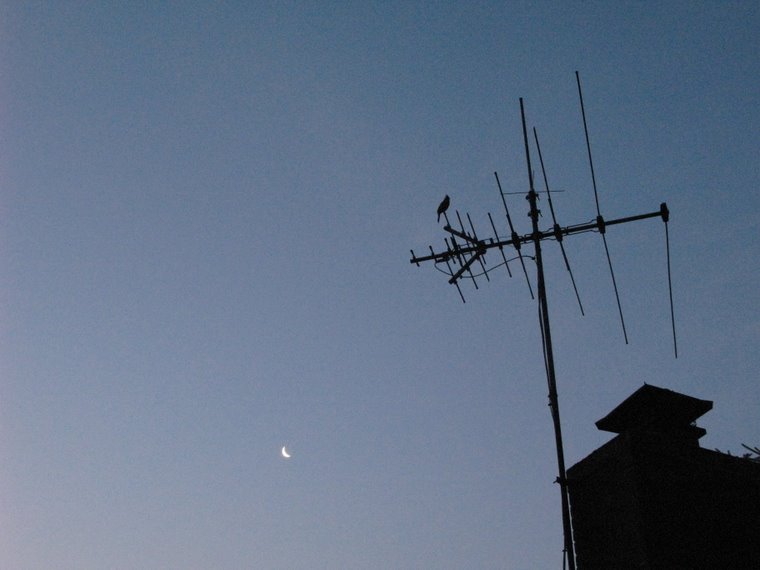The year 2010 has been a good year for taking pictures of the stars and planets.
I have accepted that I live in an urban setting just west of Washington DC--and that I live in a sort of 'hole', with no access to the horizon for good sun rise/moon rise or good sun set/moon set. Light pollution is prevalent in the north and easterly direction, often extending from the horizon to 30 degrees above the horizon--independent of any moisture in the air, creating haze.
The collection of pictures you'll see were all taken in my neighborhood--primarily from my backyard deck but also from the street out front.
My typical equipment setup is a Manfrotto carbon fiber tripod, a Kirk Enterprises ball head, a Canon T1i digital SLR running at higher ISO's (800 - 6400), 1.4 and 2x Kenko Extenders, and a Canon 300mm lens for long shots and a Canon 17 - 85mm lens for wide angle views.
Near the spring equinox in March, I captured a crescent moon:
The next major stellar event occurred in late June and early July, when Venus, the star Regulus, Mars, and Saturn all lined up, from low in the NW sky to higher in the Western Sky. Later in July (I checked on the 15th), this line was broken and no longer straight.
My western skies view is blocked by backkyard trees that have grown over the years. After walking around the neighborhood for several blocks to find a good view, I realized that my next door neighboor had a full view of the western sky. So, on the 4th of July--while neighborhood fireworks were being set off--I set up my camera in his back yard and fought off the gnats and mosquitoes during the ~ 20 second multiple exposures. This is what I go to see:
 |
| From L to R, Saturn, Mars, Regulus, and Venus |
In late August, I had a great view of the Big Dipper from my front yard. Normally I don't look for the Big Dipper until winter, but since the view was there and there was some visibility, I decided to shoot it. Note how the camera and lens were able to resolve the double star in the Big Dippers' star that is second from the end of the handle.
In a series of four consecutive pictures, I discovered some type of "sky object" that looks like a comet and moves towards the NW as it dissipates. I checked in Starry Night Pro, it showed nor indicated any space objects--so I guess it was something man-made.
Open up this image and then look towards the center of the top to see a yellowish object.
On Thursday night the 23rd of September, I took advantage of a moon one day past Harvest State with a good view of Jupiter from my deck. I used my 300mm lens with the 2x extender plus Live View 10x to manually focus on Jupiter. Tonight only 3 out of the 4 moons were showing; the 4th was behind Jupiter itself.
The bonus for the night was that Uranus was also evident--a planet I thought I'd never be able to see! With my birding binoculars, I could see Uranus slightly above and to the left; Uranus appears as a fuzzy blue blob in the sky. I over-exposed Jupiter in order to capture Uranus.
Open up the image to see Uranus at the upper left.
There are three upcoming meteor showers left for the year: late October, mid-November, and mid-December. I hope to load up my RV with chairs, warm beverages, and cameras with extra batteries and drive up to Skyline Drive in Shenandoah National Park and stay at an overlook--perhaps Stony Man--and watch the meteor shower through the night--at least that is the plan!








1 comment:
Keep looking toward the night sky and good luck with documenting the remaining events of the year.
Post a Comment